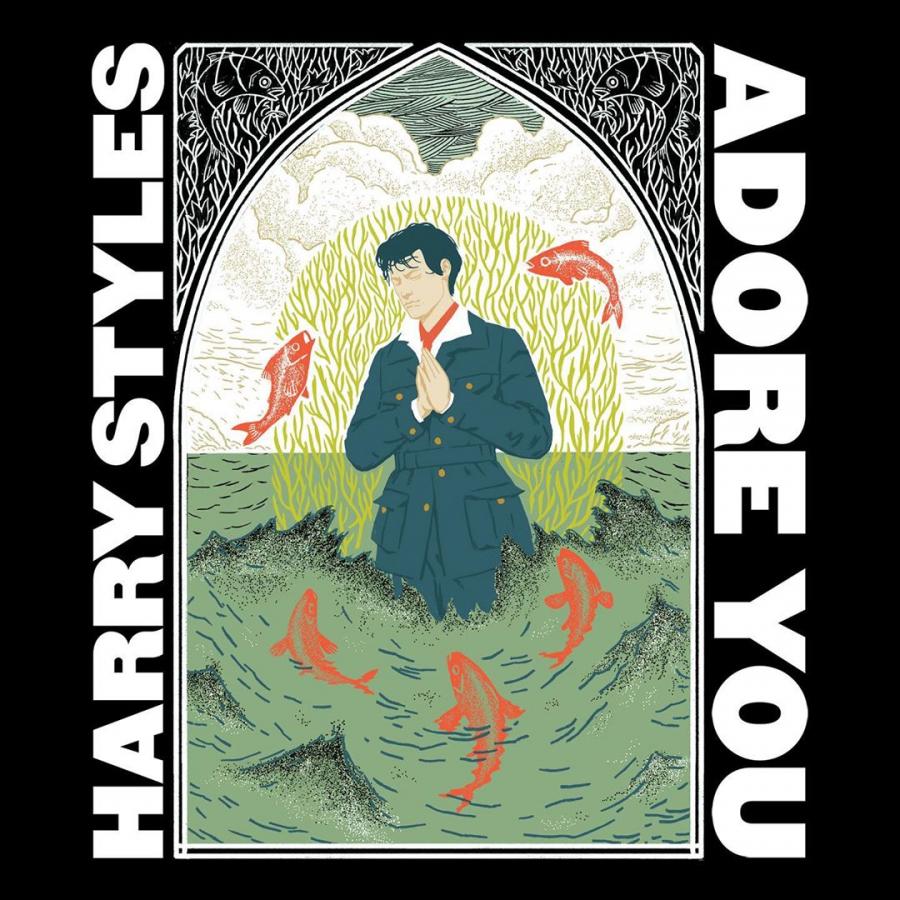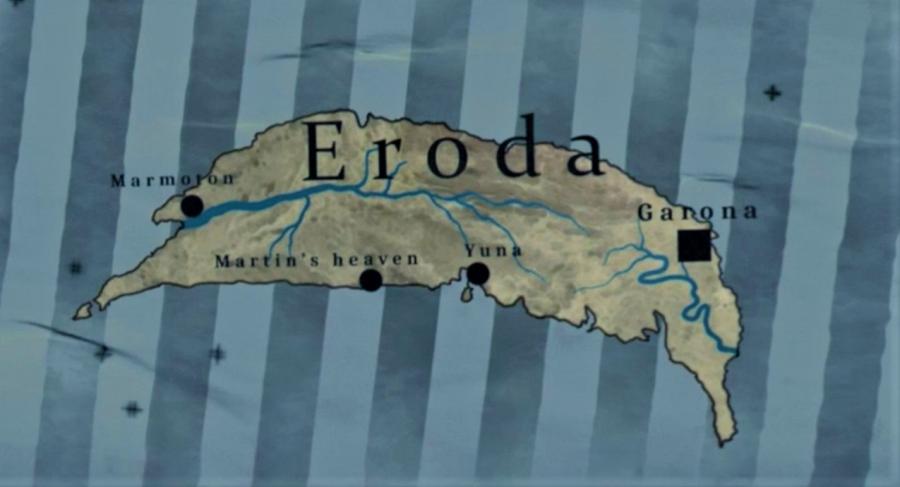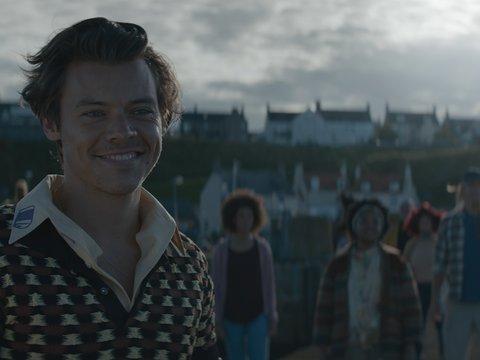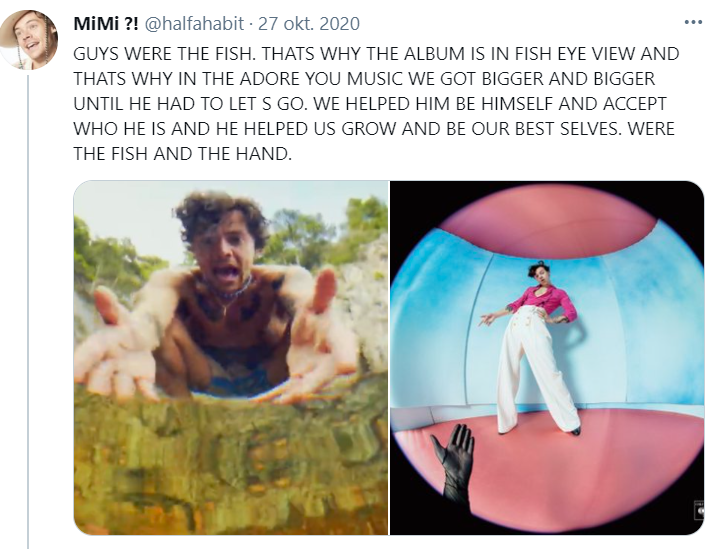
Eroda: where visual art, storytelling and marketing become one
At the end of November 2019, out of thin air, brochures began appearing across New York City. Advertisements and sponsored tweets popped up and a tourist website launched, all promoting a mysterious island called 'Eroda'. Was this island a real place to visit?
Sadly, it soon became apparent that it is a fake island and part of a marketing campaign for the release of British singer Harry Styles’ new single Adore You and his album Fine Line, released on December 13th. Was that it, just a creative marketing campaign? Why would Styles’ management, Columbia Records, spend so much time and money on a campaign to promote an album for an established artist that already has millions of loyal fans?
Figure 1: The official poster announcing the release of the song and music video
Fans started speculating, looking for clues, and they even started a Discord server and a Reddit page to speculate together. Finally, a teaser of the music video was posted and on December 6th, Styles posted the above-displayed poster (see Figure 1) on his Instagram saying that the song, as well as the music video, had been released.
This paper will focus on the Eroda project as a whole and the commotion surrounding the art project and marketing campaign on social media. Firstly, the Adore You music video as the central text will be analysed. The broad concepts of intermediality discussed by Higgins (2001) and transmediality discussed by Jenkins (2016) will be used as academic jargon to help point out interesting elements of the medium and its storytelling. Furthermore, this paper will dive into the larger context and discuss the significance of the Eroda project. Fan theories that circulated on social media and the website will be investigated that will illustrate the interconnectedness of the fandom, the artist, and his marketing team through the Internet. Lastly, the interactive Eroda experience organised by Spotify and Styles' label will be discussed to illustrate how the tale of Eroda can be considered transmedia storytelling.
The masterminds behind Eroda
Together with co-writer Chris Shafer, Dave Meyers wrote an astonishing screenplay around the made-up island. To create a high-production music video, there is a whole production team needed consisting of cast and crew that all have different tasks. The goal is to make a video that blends with the song which makes it a coherent whole that captivates the viewer.
Meyers also directed the video so he was present during the whole process and had the greatest responsibility to ensure everyone would do their job right on-screen and behind the scenes. It was a FreenJoy Production and the founder Nathan Scherrer was the producer. His job was to purchase and supply everything that was needed to make it all happen. Scott Cunningham was the cinematographer, who determined the visual style and camera setup. Together, they created the remarkable music video that was awarded a Grammy nomination for Video Of The Year.
Meyers is the mastermind behind more than 200 music videos from the most well-known names in the music industry. He might be one of the most influential music video directors of the last twenty years. The list of collaborations is long, ranging from Janet Jackson to rapper Jay-Z to pop stars Taylor Swift, Pink! and Ariana Grande. His passion for filmmaking, storytelling and his unique eye for visuals can be noticed in his work and makes him stand out as a director and radiates authenticity. In an interview, Meyers discloses that working with an artist is a mutual collaboration where they share ideas about what the artist’s musical approach is and what the song means to them. He plays with song lyrics and, immersed in the world of filmmaking, tells a story in music video format.
The music video as the central text
The whole project can be considered intermedial. Each artwork is different that determines its medium and form according to its needs and thus cannot be put into rigid categories. The music video is an intermedial art form as it is a fusion of film and music. The visual element is fused conceptually with the song lyrics. We could argue that the Eroda universe as a whole falls between art and media. It is an art project and marketing campaign that blurs the boundaries between commerce and art (Higgins & Higgins, 2001).
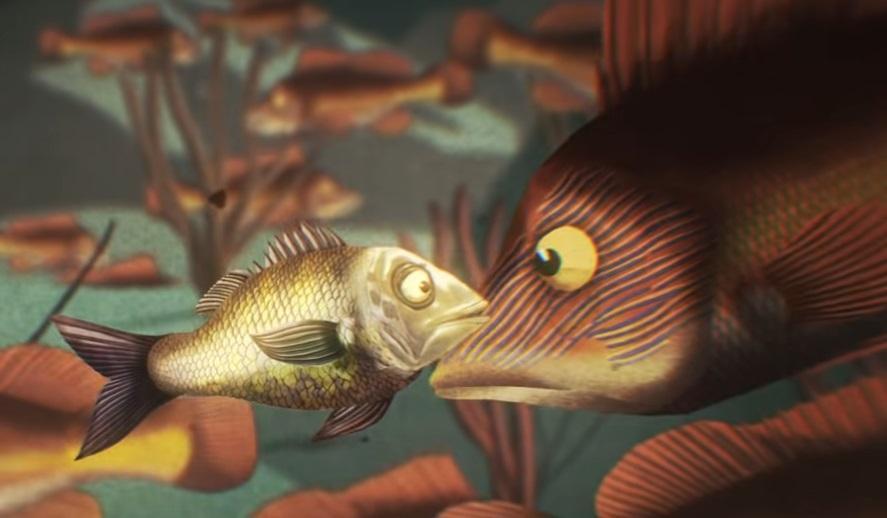
Figure 2: Screenshot of an animated scene from the music video
The music video contains traditional elements like the artist lip-syncing the straightforward lyrics. The easy, love song lyrics enabled the writers to be very creative and free in creating the narrative. The music video stands out for its aesthetic, visuals, and unusual characters that come together in a captivating plot. In some scenes, visual effects (VFX by Mathematic) and animation were used (see Figure 2). More specifically, Telecine was used which is the process of transferring motion picture film into video. For the cliff scenes, a drone was used that gave a wow effect to the location.
The music video stands out for its aesthetic, visuals and, unusual characters that come together in a captivating plot.
The next part will include a description and analysis of the music video while pointing out interesting elements from the plot.
Spanish musician Rosalià narrates the scenes and starts by informing the viewer about the history of the island. The video was filmed in Scotland, but the narrative pretends that Eroda lies off the northwest coast of Scotland. The visuals in the music video establish a necessary image of England with its grey weather, cliffs, and typical houses. The inhabitants of the isle are mostly fishermen and women living in villages as indicated on the fake map in Figure 3. She reveals that it seemed that the isle could be supposedly cursed because of weird incidents such as a lightning strike on a boat that was leaving on an odd-numbered day. It had made the locals superstitious and downhearted people and, thus, they lead a fairly grim life. Like the shape of the island, they always have a frown on their face which is funnily described as a ‘resting fish face’, which is a play of words on the phrase 'resting bitch face'.
Figure 3: Map of Eroda that is ‘coincidentally’ shaped like a frown.
Harry Styles portrays the main character: a peculiar boy that has a beaming smile. He brings light to the cloudy island but is misunderstood because he is different. This eventually makes him lose his smile and one day decides to end it all by walking into the ocean. But then, he meets a small fish that keeps jumping ashore. The fish is the catalyst character that makes the boy change his mind(set). The fish was also an outcast in the ocean and the boy realised that he was not alone in his melancholy and finally felt understood. He decides to take the fish home to take care of it and they become inseparable. Narrator Rosalià comes in with a powerful line that expresses the importance of (their) friendship: “Loneliness is an ocean full of travellers trying to find their place in the world. But without friendship, we are all lost and left without hope, no home, no harbour.”
The boy and the fish have fun together and love each other unconditionally. During these scenes, like for example the scene at the cliff where they share a taco, the lyrics match perfectly with the plot: “I’d walk through fire for you, just let me adore you. Like it is the only thing I’ll ever do.” The friendship brought the boy’s smile back and this has a contagious effect on the inhabitants as if their friendship and kindness gave them hope.
Their happiness turned out to be short-lived. As the fish grows rapidly and it is getting more difficult for the boy to take care of it. Even though he does not want to lose his friend, he wants him to be happy. But the fish has become so heavy (sensing a double meaning here), that together with the locals, they set him free into the ocean (see Figure 4).
Figure 4: Screenshot of the music video. The boy and the locals watch the fish leave with his peers.
It seems as if kindness and love broke the curse. Light returned to Eroda and people’s smiles returned. So did the locals' creativity as short scenes show how the baker, the hairdressers, and local artists find their authenticity back. The boy puts on music and uses his literal bottled up frustrations and sadness from when he felt alone and misunderstood, to sail away. The video has an open ending and the narrator hints that there are more tales to be told about Eroda.
The plot is remarkably similar to the old classic children's story 'A Fish Out of Water' from 1961. The story is about a boy who buys a goldfish, ignores instructions and overfeeds it causing the fish to expand to a size of a swimming pool. It seems that the writers took inspiration from this classic.
Fan theories: unraveling the metaphors
Through visual communication, scenes can be made ambiguous. Therefore, the video is filled with symbolism and interesting metaphors. There seems to be a tradition that an artist never truly discloses the literal meaning or intention of a song lyric or music video so that it invokes mystery and stays open to interpretation. This results in fans speculating and coming up with theories of what the double meanings could be. After the release of the album, it seemed to fans as if there were patterns to be detected that could explain the metaphor of the fish. Could it be a real-life lover or friend of Styles?
A fan tweet, displayed in Figure 5, mentioned that there is a pattern between two songs that reveals the meaning of the fish. The left picture is from the Golden music video, another song on Fine Line, where he reaches for the viewer in the water. As if the fans represent the fish that Styles loves so much and helped him get to where he is now. Also, the right picture is the album cover that used a fisheye lens with a hand pointing towards Harry. Are these all coincidences, or is there a correlation that indicates patterns in Fine Line?
Figure 5: This fan tweets the theory that the fish is a metaphor for Styles’ fans.
Since the ending was quite open and ambiguous, this also invoked some theories about the meaning of Eroda. The boy sailed away from the island using his bottled up screams. Could Eroda be a metaphor for the artist’s deepest fears in which he was stuck but moved on from, or could Eroda be a metaphor for the place where he found himself when he was with the fish (or fans perhaps)?
The tourist website seems to promote what Eroda is like after the curse broke. The website says: “Eroda’s community is tight-knit and charming. The primary occupation in Eroda is fishing, however, the island’s art scene has recently started to develop. In particular, Erodian hairstyles have become a rather bold expression of self amongst the island’s youth.” Could Eroda be a metaphorical message to his fanbase, which consists of a majority of adolescents, conveying that kindness and being your authentic self is inspiring and rewarding?
Whatever the layered meanings are behind it, there is a small chance that fans will receive a clear answer from Styles since he has been mysterious about it and said in an interview with Zane Lowe that art should stay open to interpretation.
The Eroda universe’s larger context
During the promotion of Eroda, the marketing team used different means to spread the word with both traditional and non-traditional media: brochures, digital advertisements, sponsored tweets, and a website. McLuhan’s concept of ‘the medium is the message’ can be applied here. Today’s technologies allow us to promote products on a high scale using multiple media at once. You did not have to be a fan of Styles to come across a brochure on the streets, but mostly, fans were targeted and received ads and cookies leading them to the website of Eroda. The marketing team anticipated fans engaging and talking about it on social media so that pop news outlets picked up on it. The music video was posted on YouTube, a public platform, so everyone with an internet connection can watch it. Hence, the medium that is used tells us the meaning of the project which is its impact and reach (McLuhan, 1964).
As discussed before, the Eroda project and video are intermedial, but Eroda can also be connected to transmedia storytelling. Firstly, there is multimodality because Eroda is a single narrative that was promoted using the affordances of multiple media. Secondly, there is intertextuality as each fragment of content contributes to the whole. Lastly, the project is dispersed. The fans interpret the music video and the build-up promotion and, consequently, come up with theories on the (deeper) meanings that they discuss on various social media platforms (Jenkins, 2016).
Regarding the album release, Columbia Records collaborated with Spotify and created a real-life Eroda interactive experience where a few lucky fans could delve deeper into this mysterious mythical land. They received yellow raincoats, were offered ‘Eroda specialities’ and received a tour through different rooms that resemble scenes from the music video. One room contained multiple boats docked in a small lake as if they arrived in the harbour of Eroda and another was transformed into the beauty parlour known for giving "oddly stylish" haircuts.
Figure 6: Styles in one of the rooms of the Spotify experience
As if it could not get any more magical, the fans got the opportunity to be the first to listen to the album, together with their idol Harry Styles (see Figure 6). Fans got to engage with the tale and the music video and, on top of that, got to be in the same room as the artist.
Final thoughts on Eroda’s significance
I think it is not controversial to say that the writers, the director, the cinematographer, the producer, and the rest of the production team did a wonderful job. The music video can be considered a prominent example of contemporary visual culture and the fascinating plot is not easily forgettable for those who have seen it. Even though it seems that Dave Meyers took inspiration from the children's story 'A Fish Out of Water', a central theme in his work is authenticity. There are multiple ways to interpret the video and the characters’ friendship. It was touching and somewhat humorous to see a boy become friends with a fish which makes me curious about the writer’s vision behind it.
The Eroda project can be considered intermedial since it falls in between art and media and it blurs the boundaries of commerce and art. The big marketing campaign stands out for its reach and the built suspense for fans from all over the world. Social media enabled them to interact and puzzle with each other to figure out the deeper meanings. The fan theories and the interactive Spotify experience around the one narrative make the project transmedial.
The website is still up and the narrator hinted towards more tales that could be told so perhaps, this is not the last time the world will hear from the peculiar isle Eroda.
References
Harry Styles. (2019, November 22). Harry Styles – Zane Lowe ‘Fine Line’ Interview. YouTube.
Higgins, D., & Higgins, H. (2001). Intermedia. Leonardo, 34(1), 49–54. https://doi.org/10.1162/002409401300052514
Jenkins, H. (2016, November 15). Transmedia What? - Immerse. Medium.
McLuhan, M.(1964). Understanding media: the extensions of man (6. printing). Mcgraw-Hill.
Prophets Of Rock TV. (2017, September 11). Dave Meyers Full Interview. YouTube.
Telecine. (2021, January 27). Wikipedia.
Visit Eroda. (2019, November). VisitEroda.Com.
Wikipedia contributors. (2021b, February 17). A Fish Out of Water (book). Wikipedia.
